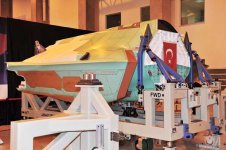Head-to-head comparisons with the world's aviation giants are, of course, meaningless. Let's also skip the speculation of an anonymous twitter account shared on the back page.
But the thing is, when we look at the ANKA-3, what we see is TAI's past 10 years, not the next 10 years. Years of accumulation, ideas, concepts, what-ifs have come together to create a proof-of-concept. But what about the results that the Anka-3 will produce directly as a result of the accumulated knowledge created by this concept?
Every time I see the Anka-3, the only thing that comes to my mind is that we are one step closer to the technology development concepts of the other aviation giants you have shared above, and maybe even that the difference in terms of achieving mass production success is much, much less than we thought.
While the geographical characteristics of the force's theatre, technical infrastructure, dozens of military and non-military issues, and the set of doctrines influenced by these issues are the main determining factors here, the main common denominator is the ability of a true stealth aircraft to deliver high-destructive munitions to the engagement range, including the ability to operate fully autonomously in enemy territory without communicating with the home base. This is the purpose of the ANKA-X (3-4-5) program. To create a true stealth platform with a largely suppressed chemical and thermal footprint, very difficult to detect in terms of RCS and undetectable communication. Anka-3 is a pioneering project and a challenging process in this respect. There are many technologies developed from scratch. But from here on, it will be largely about scaling up.







